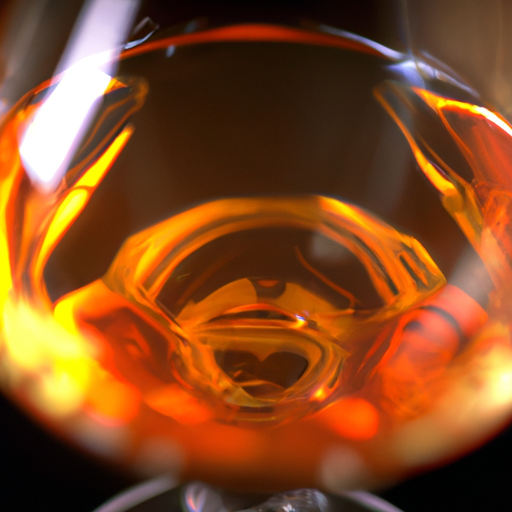
Understanding the Formation of Tartrates in Wine
Demystifying Tartrates in Wine
Understanding the Formation of Tartrates in Wine
Wine enthusiasts often come across a term called “tartrates” when discussing their favorite bottles. But what exactly are tartrates, and why are they important in the world of wine? In this article, we will delve into the formation of tartrates in wine, shedding light on this intriguing aspect of winemaking.
Tartrates, also known as wine diamonds, are crystalline deposits that can form in wine. These deposits are harmless and do not affect the taste or quality of the wine. In fact, they are a natural occurrence and can even be a sign of a well-made wine. Understanding how tartrates form can help wine enthusiasts appreciate the complexity of winemaking.
Tartrates primarily consist of potassium bitartrate, also known as cream of tartar. This compound is naturally present in grape juice and is a byproduct of the fermentation process. During fermentation, yeast converts sugar into alcohol, and as a result, tartaric acid, which is naturally present in grapes, is left behind. Over time, this tartaric acid combines with potassium to form potassium bitartrate crystals, which eventually settle at the bottom of the wine bottle.
The formation of tartrates is influenced by several factors. One of the key factors is temperature. Cold temperatures promote the crystallization of tartrates, which is why they are more commonly found in white wines and sparkling wines that are stored at lower temperatures. Additionally, the pH level of the wine also plays a role in tartrate formation. Wines with higher acidity levels are more likely to develop tartrates.
Winemakers have various methods to control the formation of tartrates. One common technique is cold stabilization, where the wine is chilled to near-freezing temperatures for a period of time. This process encourages the tartrates to crystallize, making it easier for winemakers to remove them before bottling. Another method is called electrodialysis, where an electric current is used to remove tartrates from the wine. These techniques ensure that the wine remains visually appealing without compromising its taste or quality.
It is important to note that the presence of tartrates in wine is not an indication of poor winemaking or a faulty product. In fact, some wine enthusiasts consider tartrates to be a mark of authenticity and quality. Tartrates are a natural occurrence and are often found in wines made from high-quality grapes. They are a testament to the minimal intervention winemaking approach, where winemakers allow the wine to express its true character without excessive manipulation.
When encountering tartrates in a bottle of wine, it is recommended to handle them with care. Pouring the wine slowly and leaving a small amount in the bottle can help prevent the tartrates from ending up in the glass. However, if some tartrates do make their way into the glass, there is no need to worry. They are tasteless and harmless, and can simply be ignored or removed if desired.
In conclusion, tartrates are a natural occurrence in wine that form as a result of the fermentation process. They consist of potassium bitartrate crystals and are often found in white and sparkling wines. Tartrates are not a sign of poor winemaking but rather a mark of authenticity and quality. Understanding the formation of tartrates can help wine enthusiasts appreciate the intricate process of winemaking and enjoy their favorite bottles with a newfound appreciation.
Debunking Common Misconceptions about Tartrates in Wine

Demystifying Tartrates in Wine
Tartrates in wine have long been a subject of confusion and misconception among wine enthusiasts. These naturally occurring crystals, also known as wine diamonds, can often be found in the bottom of a wine bottle or on the cork. In this article, we aim to debunk some of the common misconceptions surrounding tartrates in wine and shed light on their significance.
First and foremost, it is important to understand that tartrates are harmless and do not affect the quality or taste of the wine. Many people mistakenly believe that these crystals are a sign of poor winemaking or spoilage. However, this is far from the truth. Tartrates are actually a natural byproduct of the winemaking process and are completely harmless to consume.
One common misconception is that tartrates are a sign of an inferior or cheap wine. This is simply not true. In fact, tartrates are more commonly found in higher quality wines. The presence of tartrates indicates that the winemaker has chosen to minimize the use of additives and chemicals in the winemaking process. It is a sign of a more natural and traditional approach to winemaking.
Another misconception is that tartrates are a sign of an old wine. While it is true that tartrates can form over time, their presence does not necessarily indicate the age of the wine. Tartrates can form in both young and old wines, depending on various factors such as temperature and storage conditions. It is important to note that the formation of tartrates is not a reflection of the wine’s age or quality.
Furthermore, some people believe that tartrates need to be removed from the wine before consumption. This is not necessary and, in fact, removing tartrates can alter the taste and texture of the wine. Tartrates are completely harmless and can be consumed without any adverse effects. In fact, some wine enthusiasts even consider the presence of tartrates as a mark of authenticity and quality.
It is worth mentioning that tartrates can be easily identified and distinguished from other sediments in the wine. They are typically white or cream-colored crystals that can be found at the bottom of the bottle or on the cork. If you come across these crystals, there is no need to worry or discard the wine. Simply decant the wine carefully, leaving the tartrates behind, or pour the wine slowly to avoid disturbing the crystals.
In conclusion, tartrates in wine are often misunderstood and surrounded by misconceptions. It is important to debunk these myths and understand the true nature of tartrates. They are harmless crystals that occur naturally in the winemaking process and do not affect the quality or taste of the wine. The presence of tartrates is actually a sign of a more natural and traditional winemaking approach. So, the next time you come across these wine diamonds, embrace them as a mark of authenticity and enjoy your wine without any worries.
Practical Tips for Managing Tartrates in Winemaking
Demystifying Tartrates in Wine
Tartrates are a natural occurrence in wine that can sometimes cause confusion and concern among winemakers and consumers alike. These crystalline deposits, also known as wine diamonds, can be found in both red and white wines and are often mistaken for glass shards or sediment. In this article, we will explore what tartrates are, why they form, and practical tips for managing them in winemaking.
Tartrates are potassium bitartrate crystals that form when tartaric acid, a naturally occurring acid in grapes, combines with potassium during the winemaking process. These crystals are harmless and have no impact on the taste or quality of the wine. In fact, some wine enthusiasts consider their presence a sign of a well-made, unfiltered wine.
So why do tartrates form in the first place? The formation of tartrates is a result of the wine’s natural cooling and aging process. As the wine cools, the tartaric acid and potassium combine to form crystals that settle at the bottom of the bottle or on the cork. This process is more likely to occur in wines that have not undergone cold stabilization, a technique used to remove excess tartrates before bottling.
While tartrates are harmless, their presence can be off-putting to some consumers. To manage tartrates in winemaking, there are a few practical tips that winemakers can follow. First and foremost, cold stabilization is an effective method to reduce the formation of tartrates. By chilling the wine to near-freezing temperatures, winemakers can encourage the tartrates to precipitate out of the wine before bottling.
Another technique to manage tartrates is through fining agents. Fining agents are substances added to the wine to help clarify and stabilize it. Bentonite, a type of clay, is commonly used as a fining agent to remove tartrates. By adding bentonite to the wine, the clay particles bind to the tartrates, making them easier to remove during the filtration process.
Filtration is another important step in managing tartrates. By passing the wine through a filtration system, winemakers can remove any remaining tartrates and other particles that may affect the wine’s clarity. Filtration can be done using various methods, such as diatomaceous earth filters or membrane filters, depending on the winemaker’s preference and the desired level of filtration.
It is worth noting that while these techniques can help manage tartrates, they may also strip the wine of some of its natural flavors and aromas. Therefore, winemakers should carefully consider the balance between tartrate management and preserving the wine’s character.
For consumers who encounter tartrates in their wine, it is important to remember that they are harmless and do not affect the taste or quality of the wine. If desired, the crystals can be easily removed by decanting the wine or pouring it through a fine-mesh strainer. However, many wine enthusiasts appreciate the presence of tartrates as a sign of authenticity and natural winemaking.
In conclusion, tartrates are a natural occurrence in wine that can be managed through various winemaking techniques. While they may initially cause confusion or concern, understanding their formation and harmless nature can help both winemakers and consumers appreciate their presence. By following practical tips such as cold stabilization, the use of fining agents, and filtration, winemakers can effectively manage tartrates while preserving the wine’s integrity. So the next time you come across wine diamonds in your glass, embrace them as a testament to the wine’s authenticity and craftsmanship.






